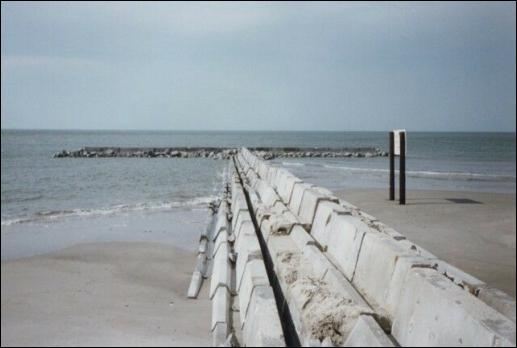Army Corps To Reinforce Coney Island Shoreline, Construct Barriers To Prevent Erosion

The following is a press release from the offices of U.S. Senators Charles Schumer and Kirsten Gillibrand, and Congressmen Hakeem Jeffries and Jerrold Nadler:
U.S. Senators Charles Schumer and Kirsten Gillibrand and Congress members Jerrold Nadler and Hakeem Jeffries today announced that the U.S. Army Corps of Engineers has approved a Project Partnership Agreement to move forward with critical repairs and emergency beach restoration for the Coney Island shoreline. This is a longstanding U.S. Army Corps of Engineers’ project to construct a series of T-Groin rock jetties to protect the peninsula and prevent further erosion that dates back to 1992.
Schumer, Gillibrand, Nadler, and Jeffries secured full federal funding for this project, without a single dollar of local funds, and this is the first Project Partnership Agreement approved by the Army Corps for a Sandy recovery project in New York State. The federal project will help construct rock jetties or T-groin structures and provide beach replenishment for the Brooklyn shoreline from West 37th Street to Norton Point. The contract award is scheduled for September with construction starting shortly after.
“This project is instrumental in rebuilding the beachfront in Brooklyn that was damaged as a result of Superstorm Sandy,” said Senator Schumer. “Not only will this Army Corps project help alleviate the problems that arose as a result of the storm, but it will also help to strengthen Brooklyn’s waterfront communities, like Coney Island, Manhattan Beach, Brighton Beach and Sea Gate, against similar damage in the event of a future storm.”
“With Superstorm Sandy’s devastating impact on Brooklyn’s shorelines, it is clear that we must move quickly to repair and improve our coastal infrastructure so that New Yorkers are better positioned to weather future storms,” Senator Gillibrand said. “This Army Corps project is an important step towards rebuilding better and protecting Coney Island from future disasters.”
“Especially since Coney Island is still recovering from Superstorm Sandy, this beach erosion and replenishment project is truly critical to protect the area’s residents from future storm damage and erosion, and to safeguard our famous beaches,” Representative Nadler said. “Even though, after redistricting in 2012, Coney Island was drawn out of my Congressional District, I have continued to fight alongside our two Senators and Congressman Hakeem Jeffries to make sure that Coney Island has the federal funds it needs to fully recover from Superstorm Sandy. After more than 20 years of working with the Army Corps, the State, the City and the Sea Gate Association to make this project a reality, I’m thrilled that we are finally going to begin construction.”
“The devastation caused by Superstorm Sandy is indicative of the desperate need to restore and strengthen the South Brooklyn shoreline and surrounding infrastructure,” said Representative Jeffries (NY-8). “I applaud Rep. Nadler for his relentless commitment to getting this project underway for the last twenty years and I am pleased that funding from the Sandy relief compensation package will be used to construct T-groin structures, replenish the Coney Island beachfront and mitigate damage from future storms.”
In the fall of 2013, Sandy emergency funds were used to place nearly 600,000 cubic yards of sand at Coney Island from Corbin Place to W. 37th Street to restore the project to its authorized design profile.
The Coney Island Reach project, which extends from West 37th Street to Brighton Beach, consists of approximately 3 miles of beachfront which provides storm damage reduction to the densely populated communities and infrastructure located along the shoreline of Coney Island. The beaches and dunes were last nourished in 1995. The Army Corps needs to repair lost beach and construct a raised berm, as well as constructing additional protections.
Federal funding will go towards constructing four stand-alone T-groin structures, one rock spur off the existing West 37th Street groin, additional stone armoring of the existing Norton Point dike, and removal of beach fill currently accumulated in front of the Gravesend Bay bulkheads, and dredging sand from the nearby Federal navigation channel in Rockaway Inlet. This beach fill will be placed along approximately 2,000 linear feet of the Atlantic Ocean shoreline within the new T-groin field.
This Project Partnership Agreement, a legally binding agreement, describes the responsibilities of the restoration project between the U.S. Army Corps of Engineers and the NYC Parks and the New York State Department of Environmental Conservation (NYSDEC).
In 2012, Schumer and Gillibrand met with Army Corps of Engineers and laid out a series of projects already authorized by Congress, including the Coney Island project, that must be started quickly.




